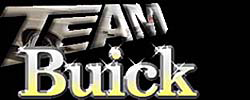
Originally Posted by
raycow

Pull the center wire out of the distributor cap and hold the end about 1/4" away from any metal part of the engine. Now crank the engine and look for a spark.
If no spark, run the following tests in the exact order given, but feel free to ask for additional info if any part of the test procedure isn't clear. You will need either a multimeter or a test lamp to check for power. The (+) and (-) coil terminal designations assume that the coil is wired correctly. In other words, on a negative ground car the (+) should be connected to the ignition switch and the (-) should be connected to the distributor.
Take off the distributor cap and turn the engine by hand until the points are open. Now turn on the ignition switch and check for power at both the (+) and (-) terminals of the coil. You want to see power at both of them. If no power at either one, check all the way back to the switch, because you have a break in the wiring somewhere.
If you have power at (+) but not at (-), disconnect the lead going from the coil to the distributor. If you have power at (-) now, you have a short to ground somewhere in the distributor or the connecting wire. If still no power at (-), you have a break inside the coil.
If you have power at both (+) and (-), turn the engine by hand until the points are closed. Now you want to see power at (+), but not at (-). If you don't get this, either the points aren't making contact or else you have a break in the wire between the coil and distributor. After you run these tests, please post back here and tell us what you find.
Ray








Bookmarks